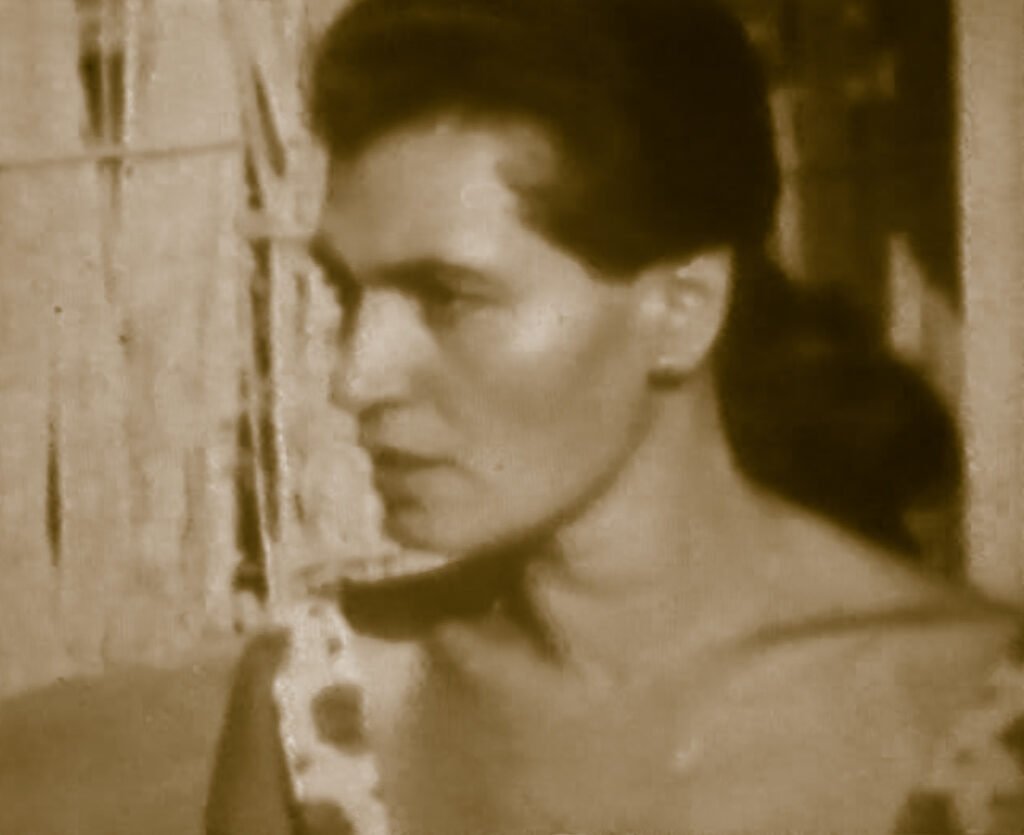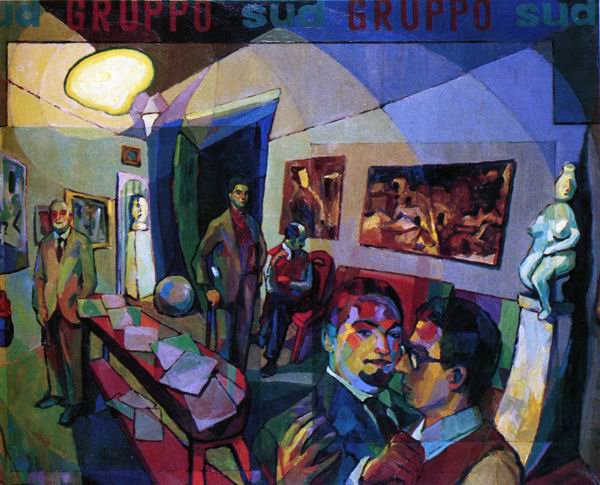Naples 1917 – Milan 1998
The artistic career of Federico Starnone, trained in Naples as a self-taught person, attending the free nude school of the Academy of Fine Arts from outside, takes place almost independently from direct participation in currents and movements, choosing more the path of personal suggestions.
He began to paint in the thirties, although his exhibition activity only began immediately after the war.
Discarded with other artists at the Forti prize in 1945, he promoted, in May of the same year, the exhibition of the so-called “excluded” at the Improta gallery in Naples, “Young artists”. On that occasion he meets, among others, Bisanzio, Tatafiore, Tarchetti, De Fusco, with whom he will be part of the “Gruppo Sud”.
He participates in the “Youth Exhibition” held at the Circolo Engineers and Architects in December 1947 and it is in this climate of great aggregation of ideas and artistic languages that are dialectical between them, that he creates the great oil on canvas Gruppo Sud (1948), dedicated to the nucleus of Neapolitan intellectuals and who was presented in a group exhibition at the Al Blu di Prussia gallery in June 1948. He painted the portraits of the anic painters De Stefano, Tarchetti, De Fusco, Lippi, also Paolo Ricci, Carlo Barbieri and Raffaello Causa. The painting of these years is influenced by cubo-futurist suggestions and gradually becomes oriented in an expressionist language. He confronts the tonalism of Mafai’s Roman School and chooses the vein of realism as an exclusive way of telling his dramatic visual stories. It is a world of veterans, partisans, drinkers, the one that takes shape in his paintings together with urban and industrial landscapes, suburbs, construction sites, railway stations. He is present at the Michetti award in 1952, ’54, ’55. In June 1955 he had his first solo show at the San Carlo gallery and after the dissolution of the Gruppo Sud he continued his journey individually. He participates in the various exhibitions of the Salvator Rosa Promoting Society of Belle Arti and in the “Exhibition of art in the life of Southern Italy” at the Palazzo dell Esposizioni in Rome (1953). He left Naples in the late 1960s, moving to Paris and then choosing to move to Lugano in Switzerland. His exhibition activity goes beyond national borders and returns to Naples in 1991 at the exhibition “Out of the Shadows”, new trends in the arts in Naples from ’45 to ’65, in Castel Sant ‘Elmo. Federico Starnone died in Milan in 1998.
In 2000 his son Domenico Starnone, one of the greatest living Italian writers, narrates, in his novel Via Gemito, the harsh reality of a fiery, impetuous, quarrelsome and deeply dissatisfied father. The book wins the Strega Prize in 2001 and gives Federico Starnone that immortality that he had pursued all his life, but which he could not achieve .


The artist at work
1958
Essential bibliography
- Pittori del Gruppo Sud – Realismo n. 23 1949
- Mostra dell’arte nella vita del mezzogiorno – Ed. De Luca 1953
- Rinascita n. 3 – 1953
- Cronache meridionali -Ed. Macchiaroli 1954
- Nostro Tempo – Anno VI n. 5 1957
- Agenda Vallecchi disegnatori Italiani – Firenze 1961
- Artisti contemporanei – Ed. Il Quadrato 1969
- Internation directory of Arts – Berlino 1969
- L’arte Italiana nel mondo – Ed. SEN Torino 1970
- Arte Italiana contemporanea – Ed. La Ginestra 1971
- Federico Starnone e il Gruppo Sud – Valori Umani anno VI n. 30 1972
- Guida al collezionismo d’arte – Ed. IRA 1973
- Bolaffi n. 8 – 1973
- Monografia Starnone – Ed. F.lli Conte – 1973
- Le arti – 1975
- Bolaffi n.10 – 1975
- Corriere della sera – Arte Mercato 1975
- La pittura in Italia – Il novecento/2 1945-1990 Ed. Electa Milano 1993
- La pittura contemporanea in Italia meridionale 1945-1990 Ed. Electa Napoli 2003


A life dedicated to art
All existence chasing the dream of immortality through their works, having no other goal than to get out of the shadows.